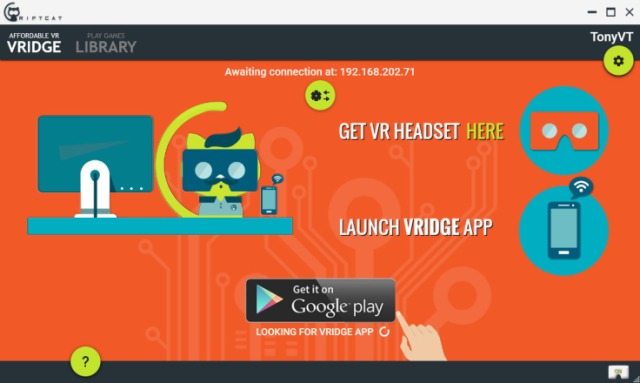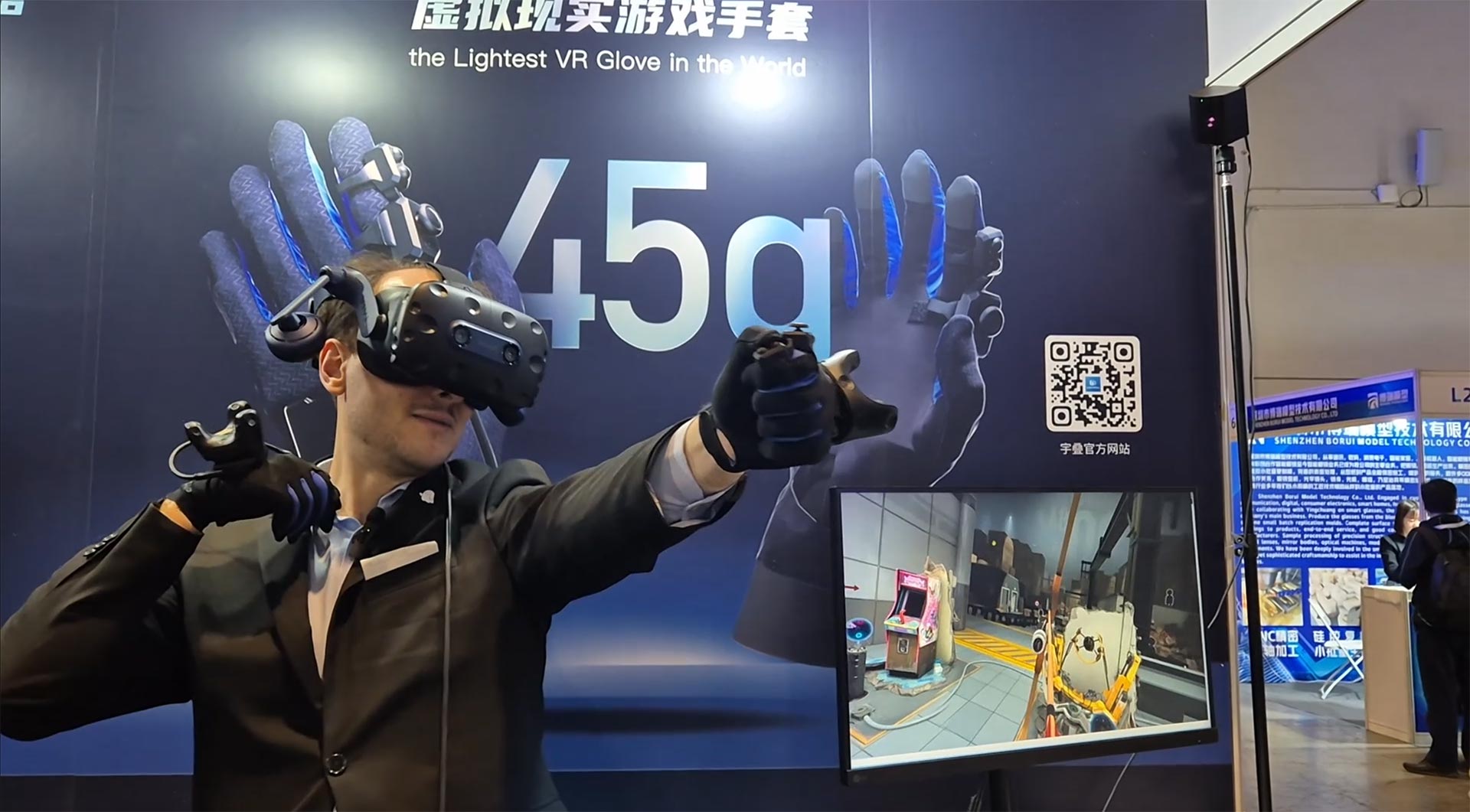What is VRidge and how to use it
Today I tried VRidge. VRidge is a cool software that lets you use your Cardboard to play virtual reality PC games for Oculus and Vive. The premises were just too awesome that I had to try it, so I spent some time trying to figure out how it works. VRidge just installs DLLs, drivers and stuff, so that when you launch your PC virtual reality game, it thinks that the required headset is attached. Instead, the service just streams all sensors data (gyroscopes and stuff) from the phone to the PC game and all visuals data (the images to show to the user) from the PC game to the phone screen. This is super-cool for two reasons:
- You can save a lot of money: with a good pc and a good cardboard, you don’t need anymore a super-VR-ready pc and an expensive Oculus headset;
- You can use mobile VR with the computational power of a desktop PC and so experience awesome VR games with a untethered headset.
RiftCat is working on this product since Oculus DK1 (Yikes!) and as a developer I can only imagine all the pain of creating the drivers, optimizing the DLLs and creating a new runtime for Oculus (Oculus license doesn’t allow to use it to interact with other devices apart than Oculus ones, so they had to write a new one from scratch!)… so really kudos to them! The project is ambitious and it also offer the possibility to use external devices, like Microsoft Kinect, to emulate positional tracking of the headset!
Making it work is really simple: download VRidge and install it on the PC. Download VRidge companion app on the phone (Android or iOS). When phone and PC are on the same network, launch both applications, then wait until the PC VRidge finds its companion app. On the PC, select which kind of game you do want to play (Oculus, SteamVR or RiftCat specific games are supported) and then select the game that you want to play. Wait for the stream to be received on the phone! At this point, simply enjoy mobile virtual reality!

I tried some experiences and this is my feedback:
- The overall quality is good: I tried TrinusVR some times ago and found it not that great (a framerate of 3-4 FPS??! You can’t even have motion sickness, because there is no motion!) I tried VRidge today and found it good. FPS and response time are still not perfect though, and I felt a bit of motion sickness while moving my head. If you’re sensitive to motion sickness, don’t try it;
- SteamVR integration is exceptional, while Oculus one is not that good: I couldn’t execute Oculus games (the stream never arrived on the phone), emulated positional tracking still not working with Oculus;
- Sometimes I head problems with streaming of images to the phone: all screen became crippled and I had to remove the headset: maybe network problems, but it’s not great to see all of this while you are in VR;
- Project is really ambitious and seeing things like emulated positional tracking with Kinect is awesome! By the way, this tracking too has to be improved, since I found it not that easy to configure and I noticed too much lag (but I’ll talk about it on my next post!).
Summarizing, I think that VRidge can still not substitute your brand new Oculus headset now, but it will surely be able to do it in the future! It’s a project that I found really really interesting and I will continue to follow it. My advice is that you have to try it by yourself… and then let me know in the comments your opinion about it! Cheers!
Disclaimer: this blog contains advertisement and affiliate links to sustain itself. If you click on an affiliate link, I'll be very happy because I'll earn a small commission on your purchase. You can find my boring full disclosure here.




You can’t interact with anything, since it doesn’t emulate the controllers. So it’s look only. They are kind of misleading to say you can “Play” VR titles, you can’t. You can only see them.
Well, actually it depends. First of all, the article has been written a long time ago, where there were more experiences not requiring controllers. Now there are very few gaze-based experiences out there.
But VRidge support various stuff to let you play different kind of experiences. For instance you can use Kinect to have room-scale. I’ve also seen people using VRidge + some kind of controllers (like Playstation moves) to play games requiring controllers.
So, yes, you’re right… but there are some workarounds that help.